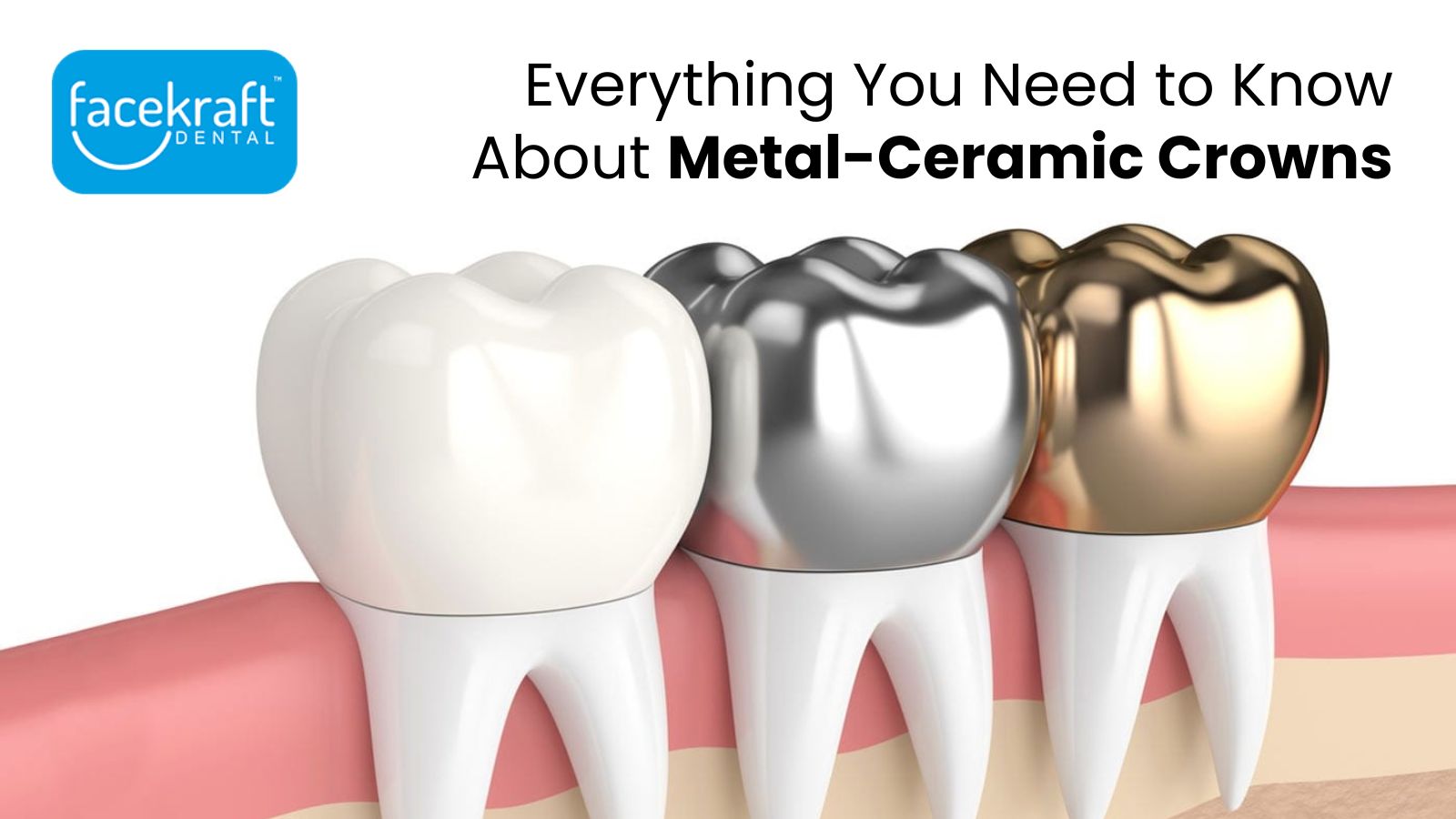Everything You Need to Know About Metal-Ceramic Crowns

Everything You Need to Know About Metal-Ceramic Crowns
Metal-ceramic crowns, also known as porcelain-fused-to-metal (PFM) crowns, are a common type of dental restoration used to repair and restore damaged or decayed teeth. They are a popular choice due to their strength, durability, and aesthetic appeal.
Here’s everything you need to know about metal-ceramic crowns:
Composition
Metal-ceramic crowns consist of two main components: a metal substructure and a layer of ceramic or porcelain fused to the metal. The metal substructure provides strength and stability, while the ceramic layer gives the crown a natural tooth-like appearance.
Strength and durability
The metal substructure in metal-ceramic crowns provides excellent strength and durability, making them suitable for restoring both front and back teeth. The metal used is typically an alloy containing elements like chromium, nickel, and cobalt, which are known for their strength and biocompatibility.
Aesthetic appeal
The ceramic layer on metal-ceramic crowns mimics the color, translucency, and texture of natural teeth, making them highly aesthetic. The ceramic can be customized to match the surrounding teeth, ensuring a seamless and natural-looking smile.
Versatility
Metal-ceramic crowns are versatile and can be used to restore teeth with varying degrees of damage or decay. They are suitable for cases where both strength and esthetics are important, such as in posterior teeth (molars and premolars) or when the restoration is not fully visible.
Fit and margin quality
Metal-ceramic crowns are fabricated in dental laboratories based on impressions taken by the dentist. The metal substructure is precisely crafted to ensure a proper fit on the prepared tooth. The ceramic layer is then carefully fused to the metal, ensuring a seamless margin where the crown meets the natural tooth.
Preparation and placement
Before a metal-ceramic crown can be placed, the tooth receiving the crown needs to be prepared. This involves removing a portion of the tooth’s outer structure to create space for the crown. An impression is then taken to capture the shape of the prepared tooth, which is sent to the dental laboratory for crown fabrication. A temporary crown is typically placed on the tooth while the final crown is being made. Once the crown is ready, it is cemented onto the prepared tooth using dental adhesive.
Care and maintenance
Metal-ceramic crowns require regular oral hygiene practices, including brushing twice a day and flossing daily. It’s important to clean around the crown margins where plaque and bacteria can accumulate with the help of best dentist in Jaipur like Facekraft Dental Clinic. Regular dental check-ups are also necessary to ensure the crown remains in good condition. While metal-ceramic crowns are durable, they can still be susceptible to wear and chipping over time.
Advancements in materials
With advancements in dental materials, all-ceramic crowns, such as zirconia and lithium disilicate crowns, have gained popularity in recent years. These all-ceramic options offer excellent strength and aesthetics, and in some cases, they may be preferred over metal-ceramic crowns, especially for highly visible teeth.
It’s important to consult with a qualified dentist to determine the most suitable type of crown for your specific dental needs. They will consider factors such as tooth location, esthetic requirements, and your overall oral health when recommending the best treatment option for you.
